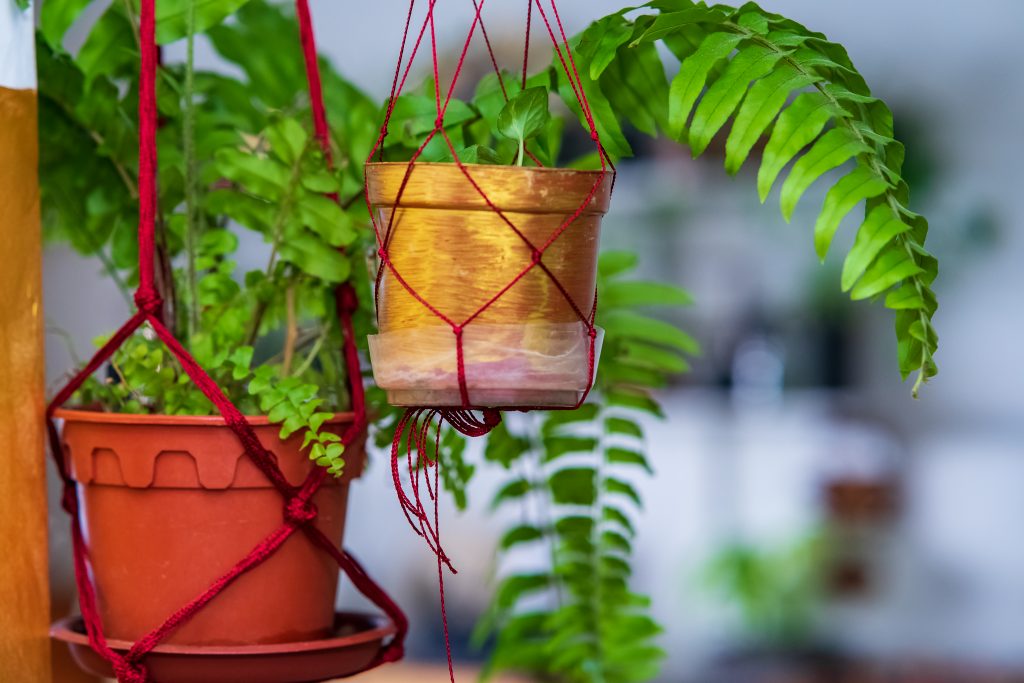In the past year, most of us have spent more time indoors and many of us will likely continue to do so for the foreseeable future. Because of this, it’s more important than ever to improve our healthy indoor air quality. One of the ways we can do this is with indoor house plants.
Photosynthesis is the key
Plants are essential to human life, and we have a symbiotic relationship with. As we learned in elementary school, plants sustain themselves through a process called photosynthesis, in which they take in sunlight, water, nutrients and carbon dioxide, and give off water vapor and fresh oxygen, which humans then inhale and we in turn exhale carbon dioxide. During photosynthesis, plants can also remove toxins from the air we breathe. This can be imagined as a sort of pumping action, in which contaminated air is pulled down into the soil and around a plant’s roots, where the air is then converted into food for the plant. The oxygen emitted from the plant has been filtered of certain toxins.
Research results
NASA has been studying this process for some time in the hopes of finding ways to detoxify air in spacecraft during long-duration space missions. NASA has performed many experiments on this, the first of which was published in 1989, and the results have shown that plants are capable of effectively scrubbing the air of cancer-causing volatile organic compounds like formaldehyde, benzene, trichloroethylene, xylene. In fact, studies have been underway to design plant-based indoor air-quality filters that can be incorporated into heating, ventilation, and air conditioning systems. Further studies concluded that microorganisms found in the soil of potted plants can also help with cleaning indoor air. While separate studies have claimed that although house plants do improve air quality, they do so at a very slow rate, and the conditions must be controlled to a level that is not realistic in the average home, there seems to be sufficient evidence to conclude that plants can help purify our in-home air, and they provide the side benefits of adding some natural beauty to our indoor living spaces and helping to brighten our mood.
Based on the collective findings of this plants-as-air filters research to date, some scientists are advocating that house plants are effective natural purifiers. In fact, larger plants with larger leaves are more effective in this process of pumping in air, cleansing it, and giving off clean oxygen. Former NASA scientist turned private air quality consultant Bill Wolverton, who led the 1989 study described above, reports that, “The amount of leaf surface area influences the rate of air purification.” So, the bigger and leafier the plant, the better it will be at this air cleansing process.
Wolverton says that expensive testing would be required to accurately determine how many and what size plants would be needed to clean a room’s air of its contaminants, but he has recommended at least two “good sized” plants per 100 square feet of space in your home. His first recommendation is the Golden Pothos because of its popularity and ease to grow it. Below are descriptions of just a few additional plants you may want to consider if you are thinking about adding them to your home to help improve your indoor air quality.
Air-purifying plants

Peace Lily (Spathiphyllum) – NASA’s studies found this beautiful evergreen to be most efficient at removing airborne toxins. Considered to be easy to care for, it is popular because of its minimal little water or light requirements (and should be kept from direct sunlight for this reason). Just place a Peace Lily in a dark corner, water it once per week, and it will purify the air around it. However, one considerable downside of this plant is that it is mildly toxic to both humans and pets. If swallowed, medical assistance should be sought immediately.
Devil’s Ivy (Epipremnum aureum) – Often called the Golden Pothos and native to the Solomon Islands, it can be found all over the world. Comprised of small heart-shaped leaves growing from evergreen vines, this houseplant is often sold in hanging baskets. It is best kept near a window, out of direct sunlight, and its soil should contain plenty of moisture. Very easy to care for, it also looks good in your home, and is one of the more effective at purifying the air of toxins. However, as with the Peace Lily, the Devil’s Ivy is also toxic when eaten, especially to pets, and side effects often begin with vomiting, so consult your veterinarian immediately if you think your pet may have ingested it.
Bamboo Palm (Chamaedorea seifrizii) – Also called the Reed Palm, the Bamboo Palm’s has tall, slender trunks that resemble bamboo, and its deep green, leafy foliage can bring a tropical flair to any interior (or exterior) space. It’s not picky about conditions and can thrive in part sun or shade and is effective at filtering several cancer-causing toxins.
Chinese Evergreen (Aglaonema modestum) – Growing about 1 to 2 feet tall, with its wide, thick leaves that have a beautify, fiery combination of red and green, the Chinese Evergreen is easy to care for and thrives in low to medium sunlight. It helps to purify the air, but as with the other plants described above, it contains an irritant that can be toxic, especially to pets.
Snake Plant (Sansevieria trifasciata) – Often called the Snake Plant or Mother-in-Law’s Tongue, this a perennial evergreen that can absorb a range of toxins including all those described above. Native to Western Africa, it is now found all over the world and can survive in low light conditions for long lengths of time but does prefer bright sun—just don’t overwater its soil for too long. Again, this plant can be toxic to pets if ingested.
In summary
Studies have shown the house plants can help purify indoor air of toxins, improving the quality of the air in our homes. There are many plants that not only help filter nearby air but are also easy to care for and give our homes added natural beauty.
SOURCES USED:
https://ntrs.nasa.gov/citations/20080003913
https://time.com/5105027/indoor-plants-air-quality/
https://www.hgtv.com/design/remodel/interior-remodel/10-best-plants-for-cleaning-indoor-air-pictures
Dr. Casey Sinclair, D.C. is a leading holistic healthcare doctor trained in functional medicine. He has extended his reach around the world by co-founding Family Health Advocacy, a health advocacy group lead by doctors and health professionals providing resources and education on global health matters. He has been fortunate to act as health a consultant to some of the largest companies in North America and as a professional speaker he’s had the privilege of speaking to thousands of people. Dr. Casey is an advocate for people suffering with chronic pain and fibromyalgia and has authored a book on the subject.

